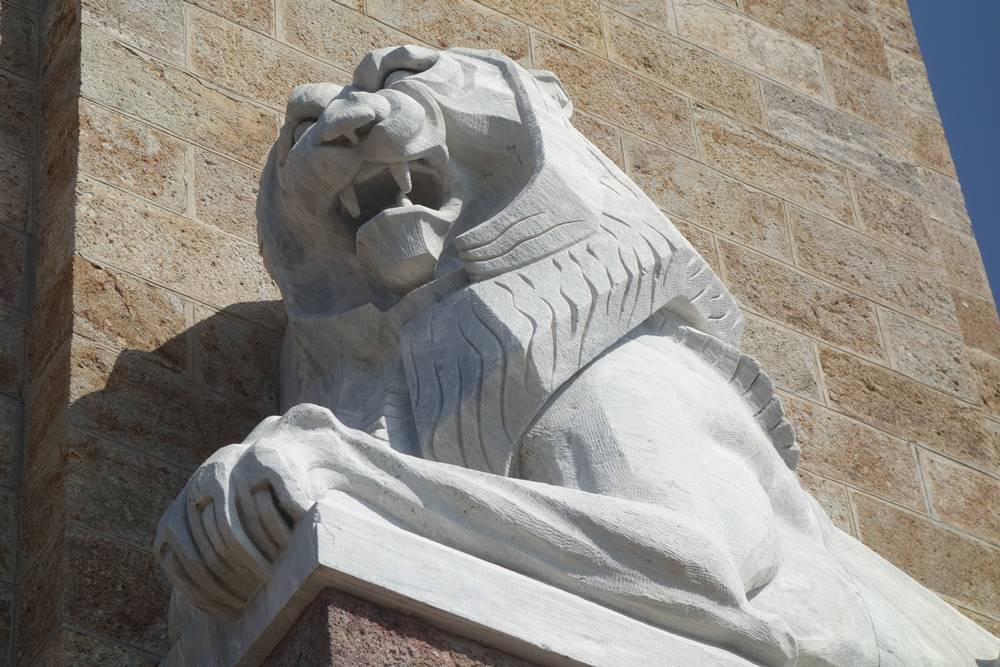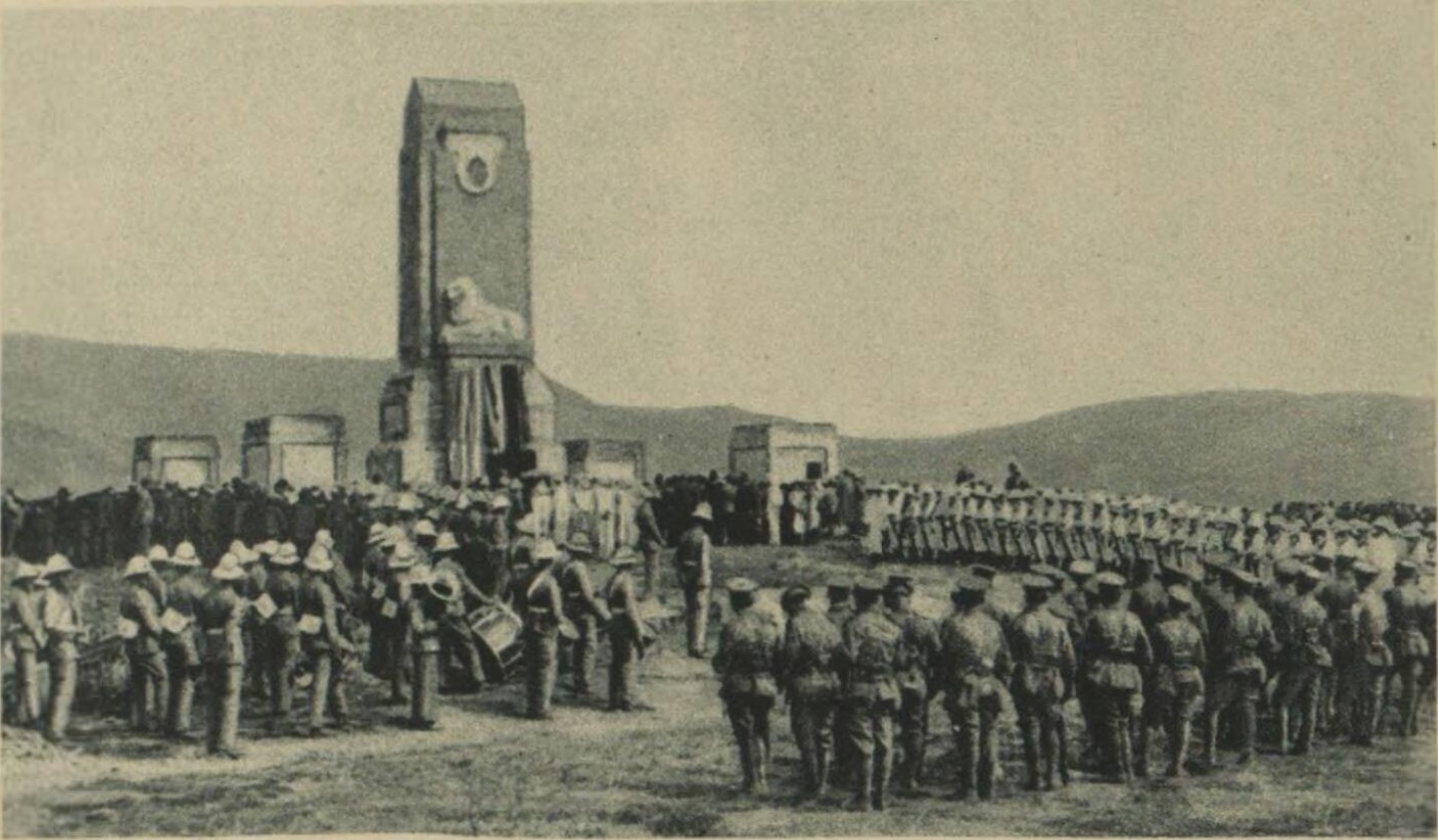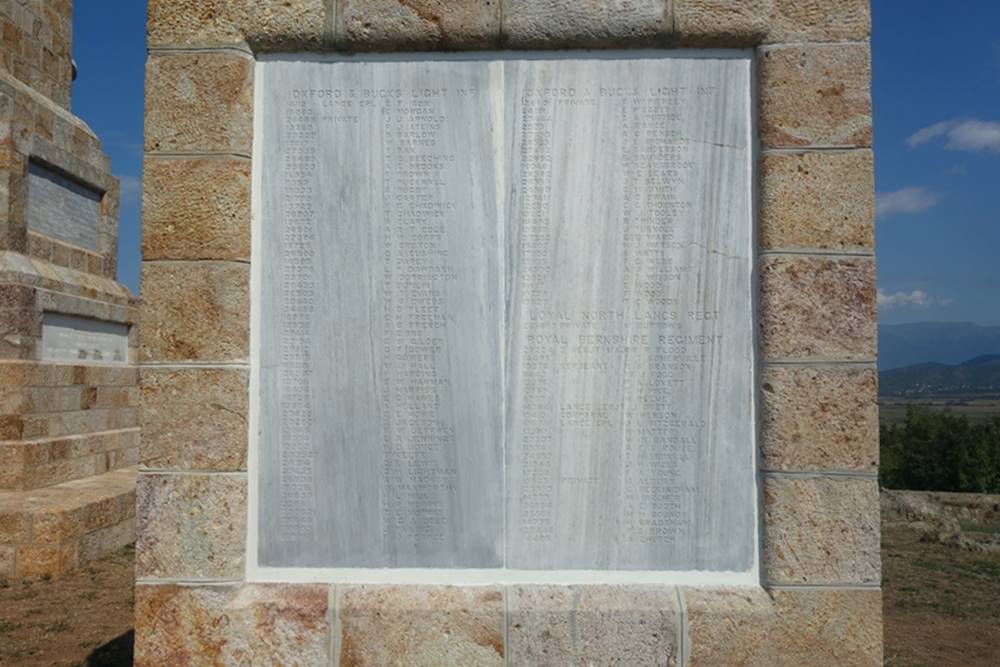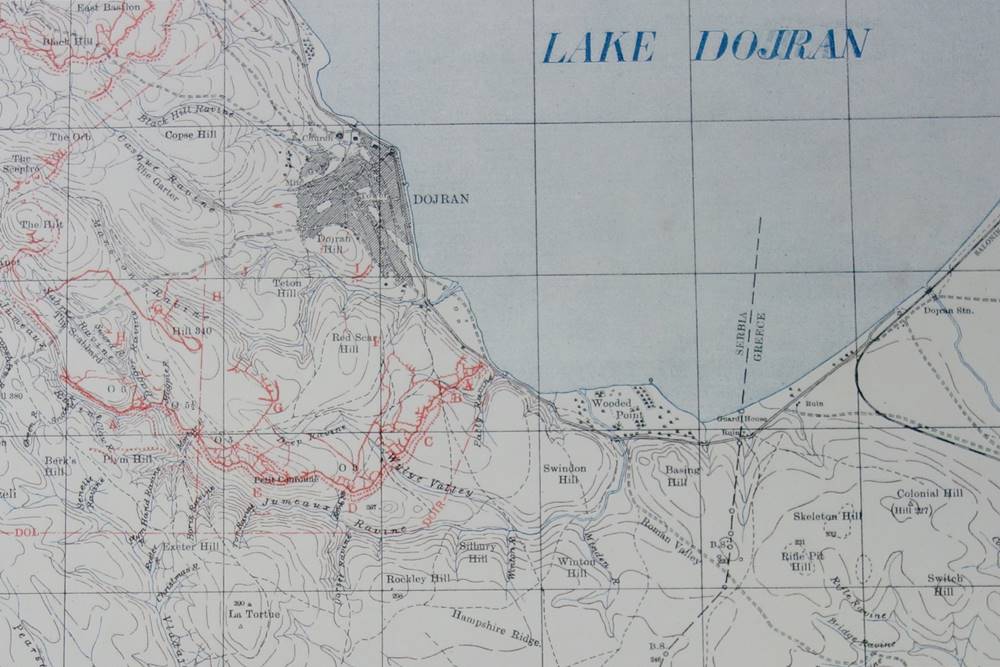This page on the Doiran Memorial is one of a series of articles on the Salonika Campaign which can be viewed by clicking on the link below:
- The Salonika Campaign
- Guides to Researching Soldiers who Served in the British Army
The Doiran Memorial
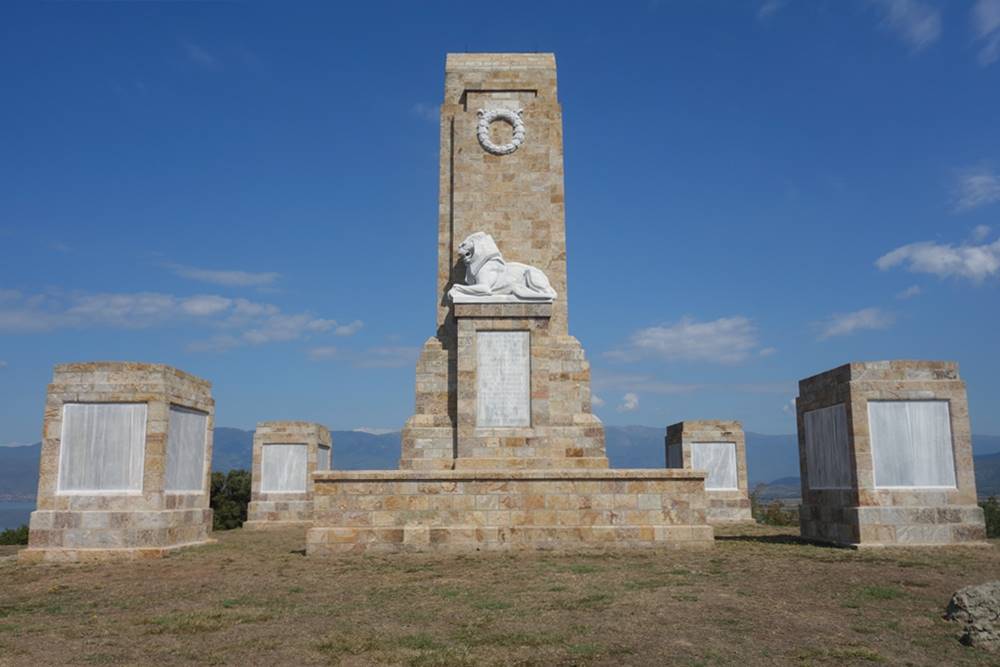
The memorial was designed by Sir Robert Lorimer who was also responsible for the Portsmouth, Plymouth and Chatham Naval Memorials to the missing. Walter Gilbert designed the sculptures. Thousands of pounds were raised privately for the memorial whose unveiling on 26 September 1925 is shown below. The guard of honour and band was supplied by H.M.S. Resolution, with Greek soldiers and dignitaries also in attendance, along with a small number of Serbian officers. The Western Morning News reported in its 27 September 1926 edition:
On the monument being unveiled, the troops presented arms and the band played the National Anthem. The prayers of dedication were said by the Archbishop of Salonika and the naval chaplain. Last post was then sounded, followed by a minute’s silence and the Reveille. The last speech was delivered by M. Petmezas [Minister of the Interior] and wreaths were then laid by representatives…
The inscription below the lions, in English and Greek, reads “In glorious memory of 418 officers and 10,282 other ranks of the British Salonika Force who died in Macedonia and Serbia 1915–1918 and to commemorate 1,979 of all ranks who have no known grave but whose names are on the panels. They did their duty”. One panel recorded the British formations which served in the campaign and another the gift of the land on which the Doiran Memorial stands “for the perpetual commemoration of those of the British Salonika Force who fell in the war 1915–1918 and are honoured here”. Of those commemorated on the Doiran Memorial, 353 died on either 18 or 19 September 1918 which are the dates for the Second Battle of Doiran. This was a disastrous attack on Bulgarian positions in the area by Greek and British troops.
While the Doiran Memorial lies off the beaten track, it does receive a small number of visitors, though nowhere near the number of those on the Western Front. I had the memorial to myself when I visited in October 2019. Many people travel via Thessaloniki, known as Salonika during the war, a Greek city just over forty miles to the south. Early visitors often arrived on battlefield tours, with the Westminster Gazette reporting on one in its 2 September 1926 edition. Mrs Flood was one of those visiting the memorial, who carrying a wreath “clambered to the farthest point, explaining: “I must see Jumeaux and the Petit Couronne [shown on map below]. My husband has no grave. He was last seen lying over a Bulgar trench on the Petit Couronne”. The newspaper’s 8 September edition carried further information:
One London woman, Mrs. Flood, a widow of a Royal Berkshireman, carried a wreath, but had nowhere to lay it, for her man had no grave. He was last seen hanging over a Bulgar trench on Petit. She wanted to climb to the trench on that evil hill, but time forbade. “Leave your wreath here, in Jumeaux Ravine, the last place he crossed,” suggested a Doiran man. “No.” she said. “I want to put it on the memorial which bears his name.” And she hurried back.
There is only one possible candidate for the soldier, Company Serjeant Major Robert Flood of the 7th Battalion Royal Berkshire Regiment who was killed in action on 9 May 1917. His wife who had made the long pilgrimage was Frances Daisy Flood. Robert had enlisted in the Royal Dublin Fusiliers in 1899 and in 1909 had re-engaged to complete 21 years in the army. He spent the pre-war period with the 1st, then 3rd and finally 5th Battalion before being transferred to the Berkshire Regiment in July 1916. Frances Flood was awarded a pension of 18 shillings and nine pence from 21 November 1917 and outlived her husband by over sixty years, dying in April 1983 at the age of 99. Twenty-one men of the 7th Battalion died on 9 May of whom thirteen are commemorated on the Doiran Memorial and six are buried in the nearby Doiran Military Cemetery.
The extract below is from the trench map Dojran Edition 3 with “Trenches inserted from aeroplane photographs up to 26-6-17”. There are a lot of editions of this map with many also showing British positions. Colonial Hill, where the Doiran Memorial was built, is shown in the lower right-hand corner and the Bulgarian position encircled the village of Dojran which was completely ruined during the fighting. Each side of a square was one kilometre of length with the distances between Allied and Bulgarian positions in the campaign often considerable.
There aren’t a lot of books on the Salonika Campaign and the best book I have found is Under the Devil’s Eye: The British Experience in Macedonia 1915-1918 by Alan Wakefield and Simon Moody. As well as covering the major engagements, there are chapters looking at life both at the front and behind the lines and on “Medical Provision and Hospital Life”. The book also has good maps. The most important resource for researching a soldier during the campaign, after their service and medal records, is the war diary of the unit they served with. This will record the location and activities of the unit.

